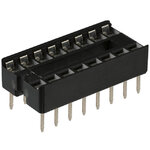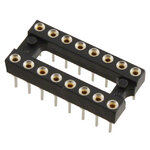PrescottDan
Banned
Older IC sockets had different springs and contacts inside the IC sockets
What is the difference between the newer sockets that have different springs and contacts?
The Older EEPROM IC sockets would cause intermittent problems because of the springs and contacts inside the sockets
Is there a tool to fix the spring and contact of IC sockets?
What is the difference between the newer sockets that have different springs and contacts?
The Older EEPROM IC sockets would cause intermittent problems because of the springs and contacts inside the sockets
Is there a tool to fix the spring and contact of IC sockets?

